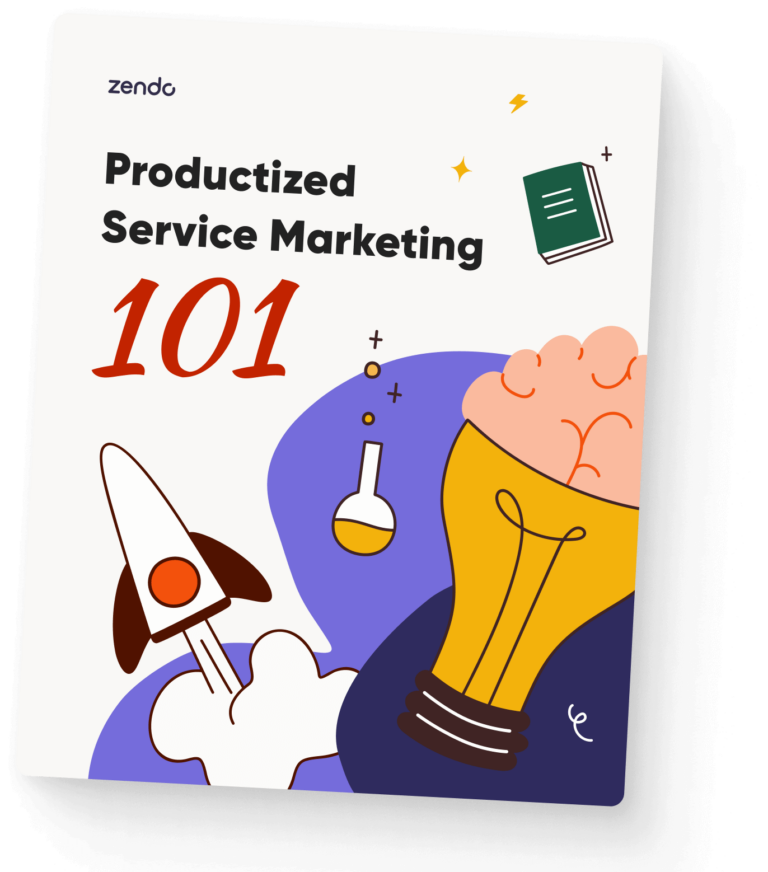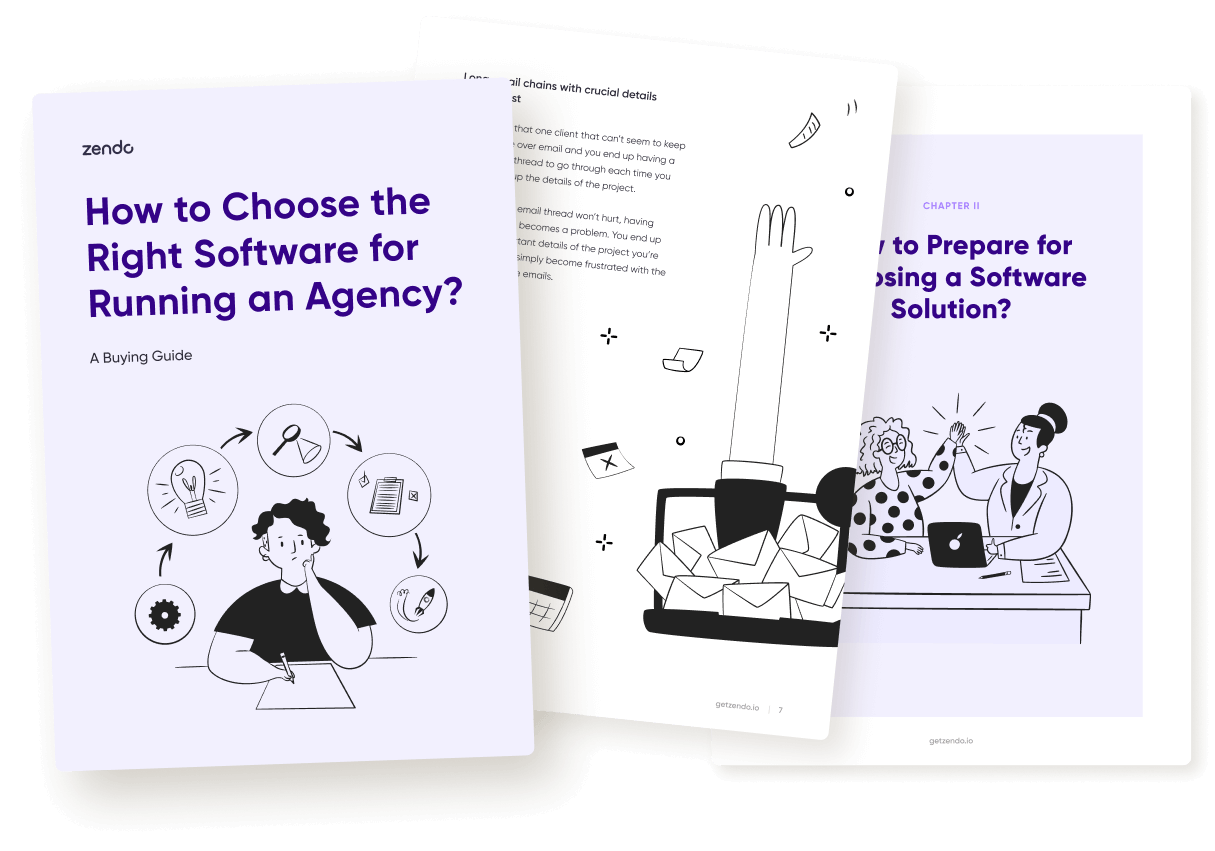Selling services and products is the cornerstones of the global economy. Everything that is sold falls into those two categories. The million-dollar question is: which is better?
As you could imagine, there is no simple answer to this question. It all depends on your business and what problems you are trying to solve with your product or service. In recent years, many hybrid business models emerged. You are probably familiar with SaaS (Software as a Service) – a product sold in a form of service. On the other hand, many industry leaders have been evangelizing the productization of services – services sold as products.
In this article, I will cover all of those business models. Their advantages, disadvantages, how to serve them, and why. I have run a company (or a department) in each of those business models, so let me share some personal experience and the knowledge I gained over those years.
What is the Difference Between a Service and a Product?
Businesses can offer both services and products in exchange for money. The most apparent difference between a product and a service is that one is tangible and the other is not. Services cannot be measured or weighed, they do not have any physical properties. The service, in its essence, is a process; therefore, it’s much more flexible.
Most services require client interaction and sales conversation. Because services are not “boxed,” it is much easier to adjust them to prospect needs. One of the reasons we have created Zendo is to give our clients the ability to sell their services and have all the tools needed to deliver them effortlessly. Zendo provides an easy way to communicate and gather essential information from potential customers.

Most products can be touched and measured – they are tangible. More often than not, they are also fixed. A product is something that you can pick up from a shelf and buy as-is.
In most cases, products can be returned if you are not satisfied. The opposite is true for services. It is hard to replace something intangible: unless there is a “satisfaction guarantee policy”, you will not be able to get your money back once the service is provided.
The level of interaction with a customer is also very different. Most products are bought without any interaction with the client. Contrarily, most services require an exchange of information. You, as a customer, need to specify your expectations. Let us take a closer look at…
Selling Services
Selling a service is selling yourself, your experience, knowledge, and know-how. In services, YOU are the product, nothing else.
Service Business is the Cornerstone of Global Economy
Deloitte’s study shows that almost 70% of the global economy is based on selling services. For highly developed countries, this is even more true, and the number rises to 75%. Each year the market for services is growing. Since 1997 the services market has grown globally by more than 5%. That is more than 4 trillion U.S dollars.
Selling services is also called “selling the invisible”. In the last two decades, the digital revolution has happened, and the majority of businesses have moved online. Even stationary companies have websites to take bookings, consultations, and customer requests online.
In many cases, service requires custom pricing. Evaluating each offer one by one may be time-consuming. For many businesses, that might not be a huge problem, but customizing an offering requires a lot of back-and-forth communication with the customer. The evaluation process can drag for days, and in the end, a prospect will choose a different provider anyway. That is why custom services have much higher prices. You pay a premium for personalization.
Service doesn’t have to be a one-off purchase. The holy grail of the business models is a subscription. For example, instead of selling a website customization service, you could sell a maintenance plan. Many clients do not use their subscriptions to the fullest, so you can offer the service cheaper and have a steady income.
Take a look at Netflix: their subscription is pretty cheap and you get access to tens of thousands of movies and tv shows. Most buyers do not use Netflix every day, but some will binge-watch for days. Those two customer groups live in equilibrium. Such customer behavior is true for many service businesses.
Productization of Services

In recent years we have seen a trend in which many popular service providers package their services into products – this is called productization. There even is a saying, “if you want to make money selling a service, you need to package it as a product”.
For example, you could package a copywriting service based on a number of words. So your product would be a 1,500-word article. The price would be constant, so you do not have to evaluate each request separately, saving a lot of time.
When you sell a product, you build something once and then sell it multiple times to your prospects. If you are a service provider, you can do the same thing with productized service. For example, if you perform a manual task, you can look for ways to automate it. If one of your offerings is much more popular than the others, you can package it into a product. That way, you minimize the drawbacks of services and supplement the benefits of a product.
Expert And Premium Services
To further enhance your offering, you can build a few tiers for your services—for example, standard, premium, and enterprise. As a service provider, delivering premium offers is a great way to earn extra money. Many clients are willing to pay extra for top quality.
Advantages of Selling Services
- It’s much easier to start as a service provider than to build a compelling product,
- You can charge a premium for expert assistance,
- You can interact with the clients and up-sell other stuff in the process,
- You can learn and improve your offering through client communication,
- Services can be productized, which results in cost savings.
Disadvantages of Selling Services
- A lot of services require custom pricing and evaluation = time,
- Working out the details of each service may be time-consuming,
- Initially, founders have to do pretty much everything until their business grows to the point they can hire outside help.
Selling Products

A product is something tangible. Every product is built at a cost and sold at a price. Products are made to solve problems (or a want) – that is its primary purpose.
The most significant advantage of selling products is that you can build something once and then sell it for a long time. You do not need to repeat the same work over and over again.
Building a successful product is not an easy task. Project management, growing your customer base, marketing, figuring out the product-market fit – those are all the nightmares that every entrepreneur has to struggle with.
You can spend months developing a product just to find that your competition has beat you to it. Building a product with limited resources may be risky but having a profitable product gives you stability.
So why do people in their right mind build products? Because they are much easier to scale. Once your company develops a solution, it can be sold repeatedly (if it is a digital solution, then the scale is pretty much infinite). To scale up a service, you always need more workforce.
Business Models
There are many different business models when it comes to selling products. In physical goods, the one-time model is still the king: people pay once, and they own the product.
In virtual space, we can see a more extensive diversification of business models to attract different buyers. Each of those models also has a different sales cycle. You could charge monthly, yearly, or one-off. Some online businesses charge for every major release of their products. Companies like AWS charge for usage. Shopify takes a fee from each transaction. The possibilities are endless.
You need to choose what works best for your product. Let us look at one of the models.
Product as a Service
Selling physical goods or software as a subscription is a great business model. Businesses can sell at a lower price, but in return, they have a steady cash flow. For the buyer, it is much more affordable in the short term.
The sales team also has a more straightforward job because it’s much easier to sell something that costs just $9 per month than $100 for a lifetime. Psychologically speaking, this is a model with the lowest entry barrier (except for the freemium model).

You would think that this is only feasible for the digital world, but you would be wrong. Various subscription-based businesses sell physical goods, like Dollar Shave Club or Flaviar.
Numerous software companies use this business model. Even giants like Adobe moved to subscription-based payments with their Creative Cloud.
Advantages of Selling Products
- Easier to scale,
- The sales number isn’t directly correlated with the workforce,
- Financial independence is easier to achieve
- Simpler sales process
Disadvantages of Selling Products
- Hard to start your business with a product as you have to build it first,
- It’s tough to develop a connection between the company and its customers
- High research & development costs
Product and Service Examples

Let us say you walk into a hair salon. You pick a service called “Male / Female Haircut”. You can customize the service by describing what you want, showing photos of a celebrity, etc. You are personalizing the service to your needs. Such service providers do not have products of their own. A lot of them sell third-party products like conditioners or shampoos. It is a widespread practice to offer both. Think about IKEA. They offer products, but you can pay extra for them to deliver and assemble the furniture.
Here are some examples:
- Products:
- Books,
- Food,
- Plain,
- Car.
- Services:
- Copywriting,
- Ordering a dish from a restaurant,
- Airline flight,
- Car maintenance.
As you can see, both groups of examples correspond with each other. They are inseparable. Most products drive the need for assistance, and services are likely to have a tangible element that could be turned into a product. Hence, there is no clear difference between product and service. Those are lucid concepts. Most businesses offer both even if they do not notice it.
How to Scale Your Sales
No matter what you sell, the principles are similar. Invest in the marketing and sales team. They should work together closely. Building strong branding from day one is also essential.
To sell services, you will need a workforce and skilled staff. Developing in-house skills should be a priority for you.
It is a little bit different for product-based companies because instead of a workforce, you need support and excellent customer service.

Marketing
There are many aspects of marketing; I will not go into details as this is a very vast topic. Below are a few tips that may start you off.
Build a good website. Create an offering that is easy to understand. Focus on your branding. Try different marketing methods like writing articles, affiliation, cold emailing, social media, or SEO. Targeting your direct competitor may be a good idea. Tap into their weak spots. See what works and then double down on the channel that did. Success is all about trying different things and measuring the outcome. Without that, your work will go to waste.
There are plenty of service industries based on just one main channel of marketing, like affiliate marketing. Many hosting companies rely heavily on this tool.
Sales Process
It is wise to develop a sales process to get more leads. I would recommend starting this yourself, as a sales rep will not be much help at this point. Win your first clients (about 10 of them) yourself – this will give you a priceless insight. Building a sales process will be much easier from there, and you will have a better idea of the person you would want to hire as your first (and only one for now) sales rep.
Look for someone with relevant experience. Different skills are required to sell physical goods, digital services, and so on.
You want to be cost-efficient, and hiring a whole team of salespeople will not make sense. Your salesperson should focus on building relationships with customers. Turn prospects into buyers. Up-sell when you can. See how your competition is operating, schedule a call with competitors’ sales team.
When your product is expensive, you might want to invest in dedicated account executives for each of your clients. Such a position is mainly used for enterprise solutions.
Is It Better to Sell a Product or a Service?

First, think about why should anyone pay for your service or product? The answer should be to solve a problem or to fulfill a need. The bigger the problem/want, the more money customers are willing to spend on a solution. You should always start with a problem/want you are trying to solve. Leave the business model dilemma for later.
It’s easier to start with a service business than with a product. Building a product takes time and money, and you have no income before you start selling it (even if you have potential clients asking for it) Services can be offered right from the start, with no delay.
It is wise to combine different business models to gain an advantage over your competitors. For example, a SaaS company should think about offering on-demand services to their customers. Many software companies are built in a DIY (do it yourself) model; by providing an aspect of DIFM (do it for me), you can target a much larger audience and earn extra money in the process. I see more and more SaaS companies offering services and not only their main product.
The same could be said for service companies that with time invest in product development. Combining different business models gives you stability and resistance to market changes. Always diversify your business.
One Key Advice (No Matter What & How You Are Selling)
When building and selling services or a product of any kind, it’s easy to lose the focus on the one factor that makes your business successful: customers. As your offering develops and more people start using it, you may find yourself buried under a pile of requests, briefs, invoices, scattered emails, or even loose scraps of paper with crucial information on a contract.
We have created Zendo for the sole purpose of making businesses’ lives easier when communicating with customers. Check out how you can elevate selling services and running a service business with an easy platform for handling customer requests – sign up now!
Thanks,
Kuba.

A free online training. Delivered daily to your inbox to grow your productized agency.











